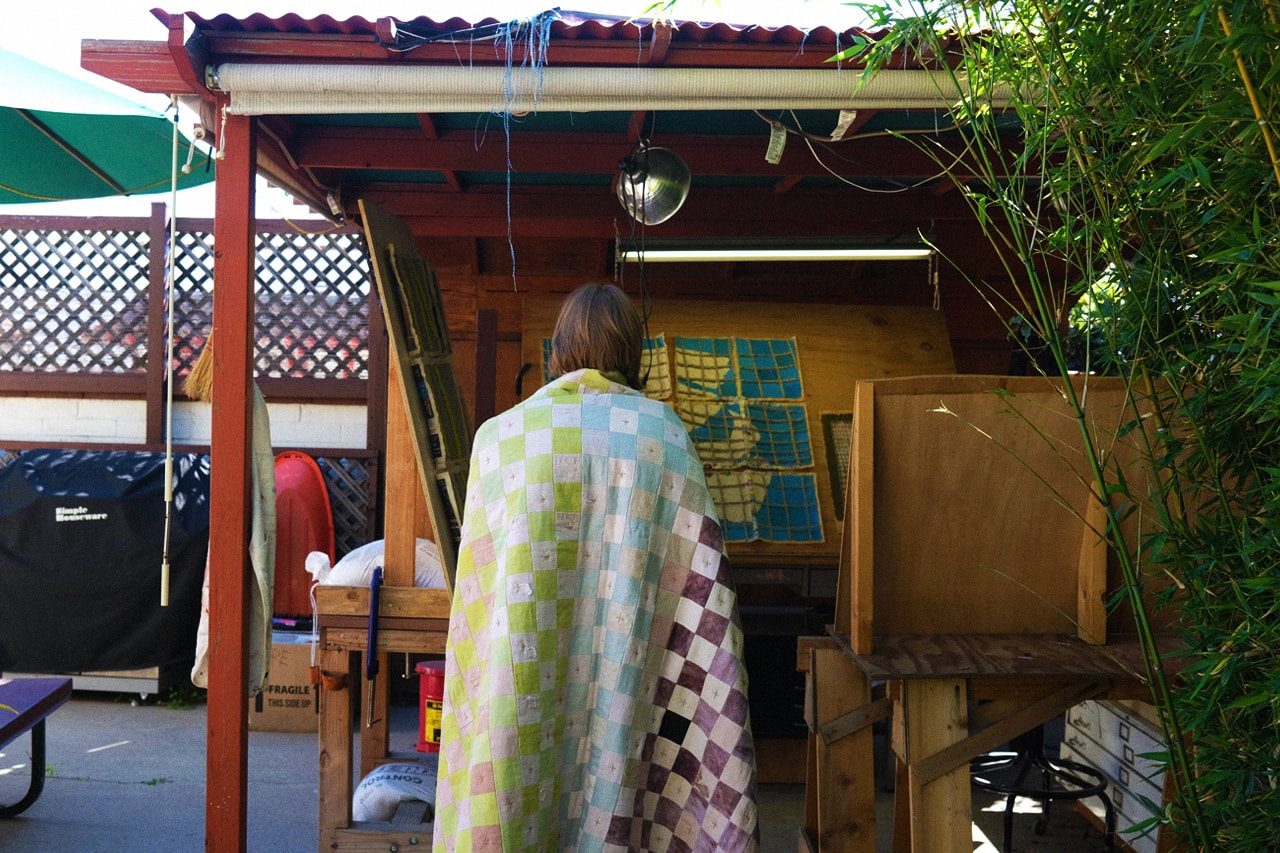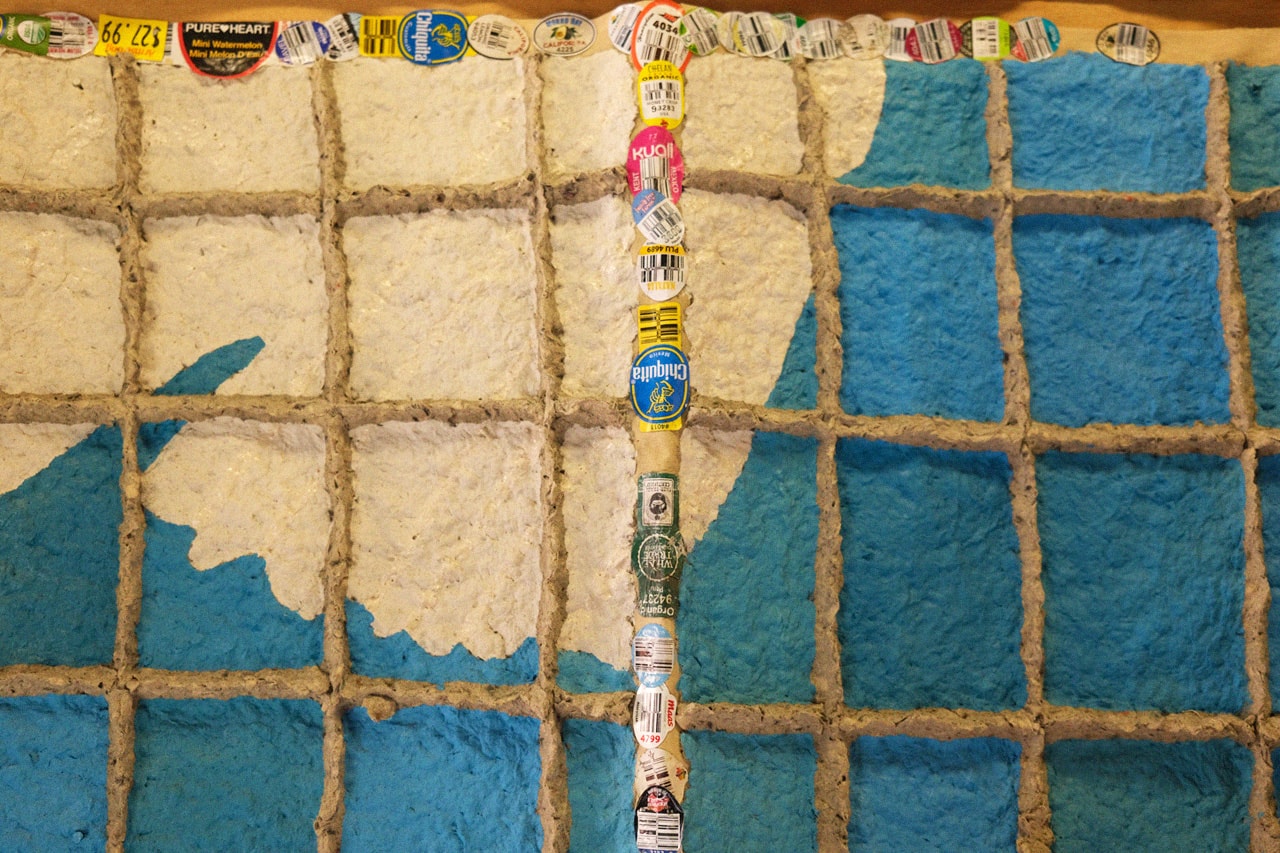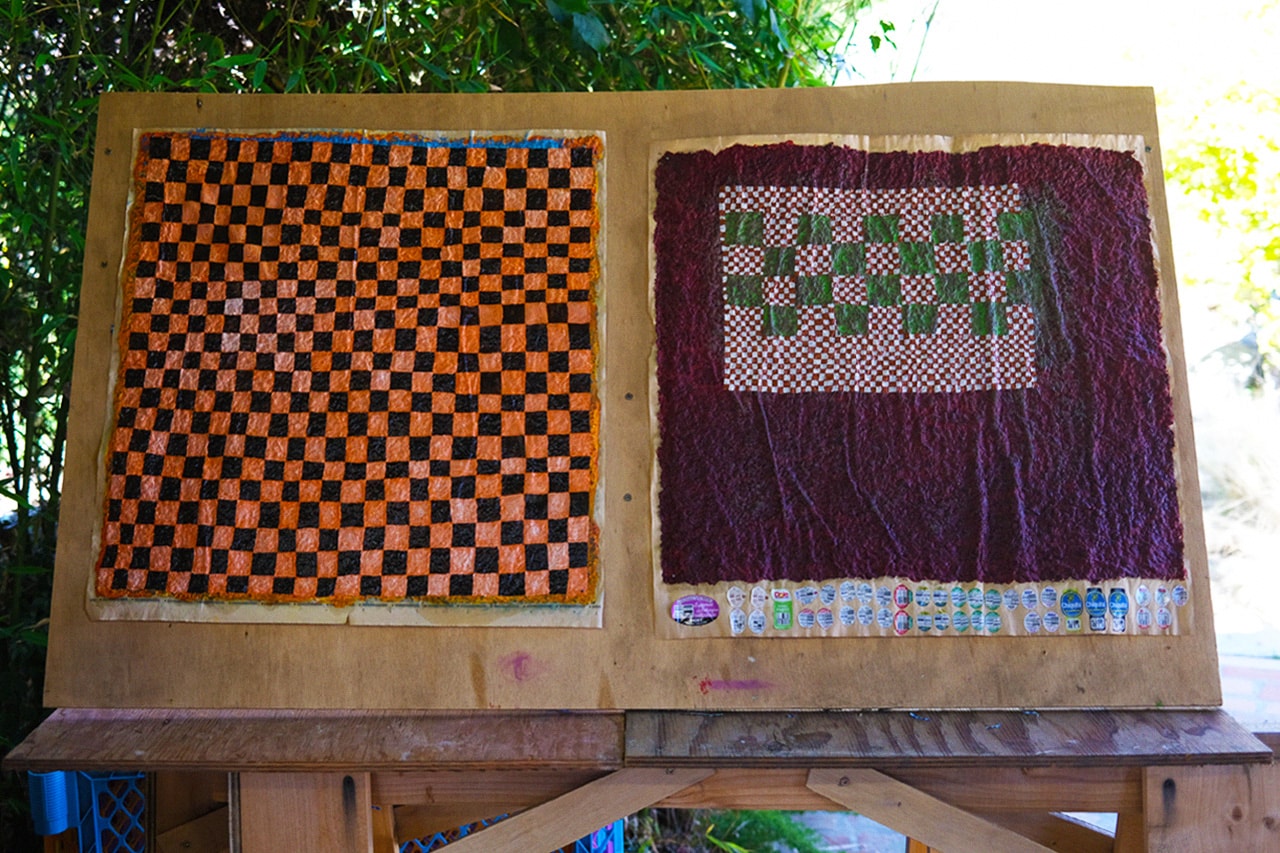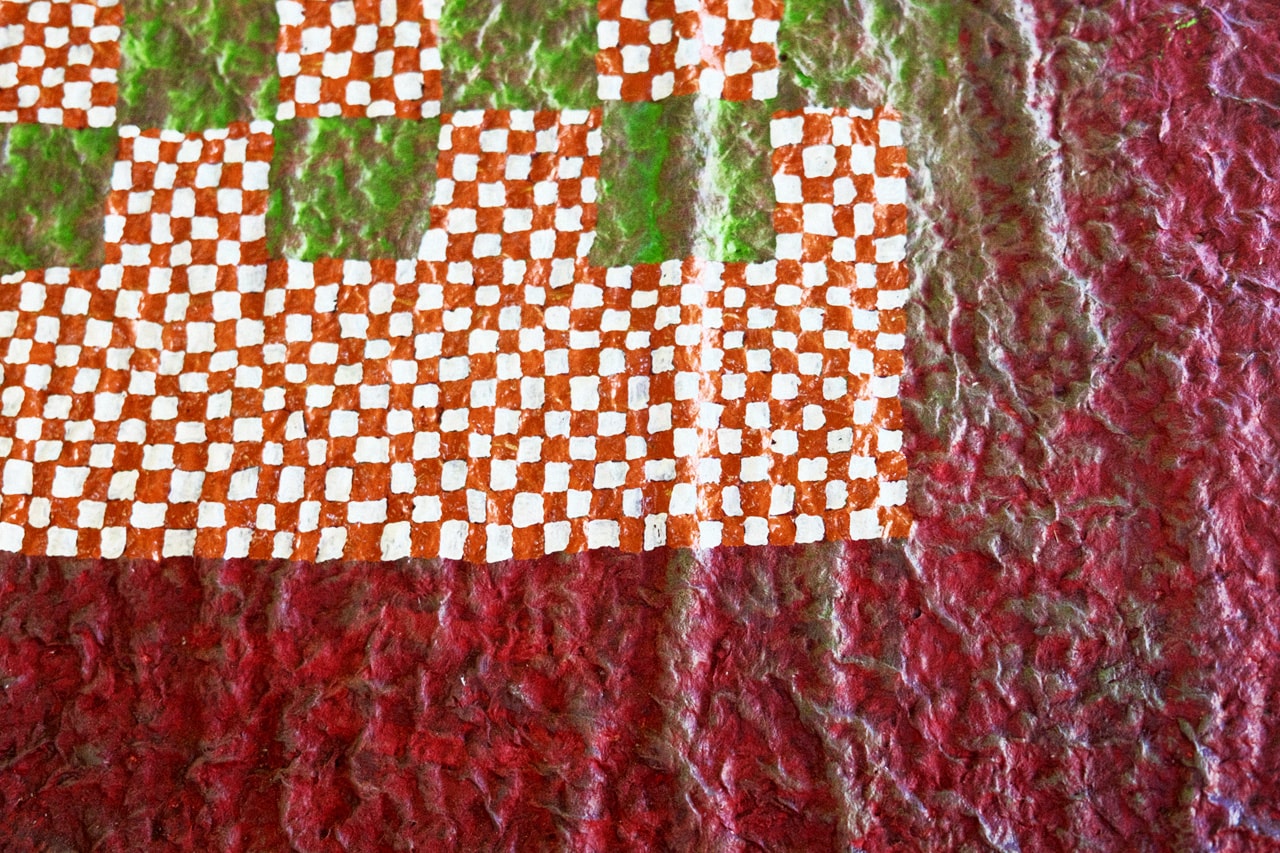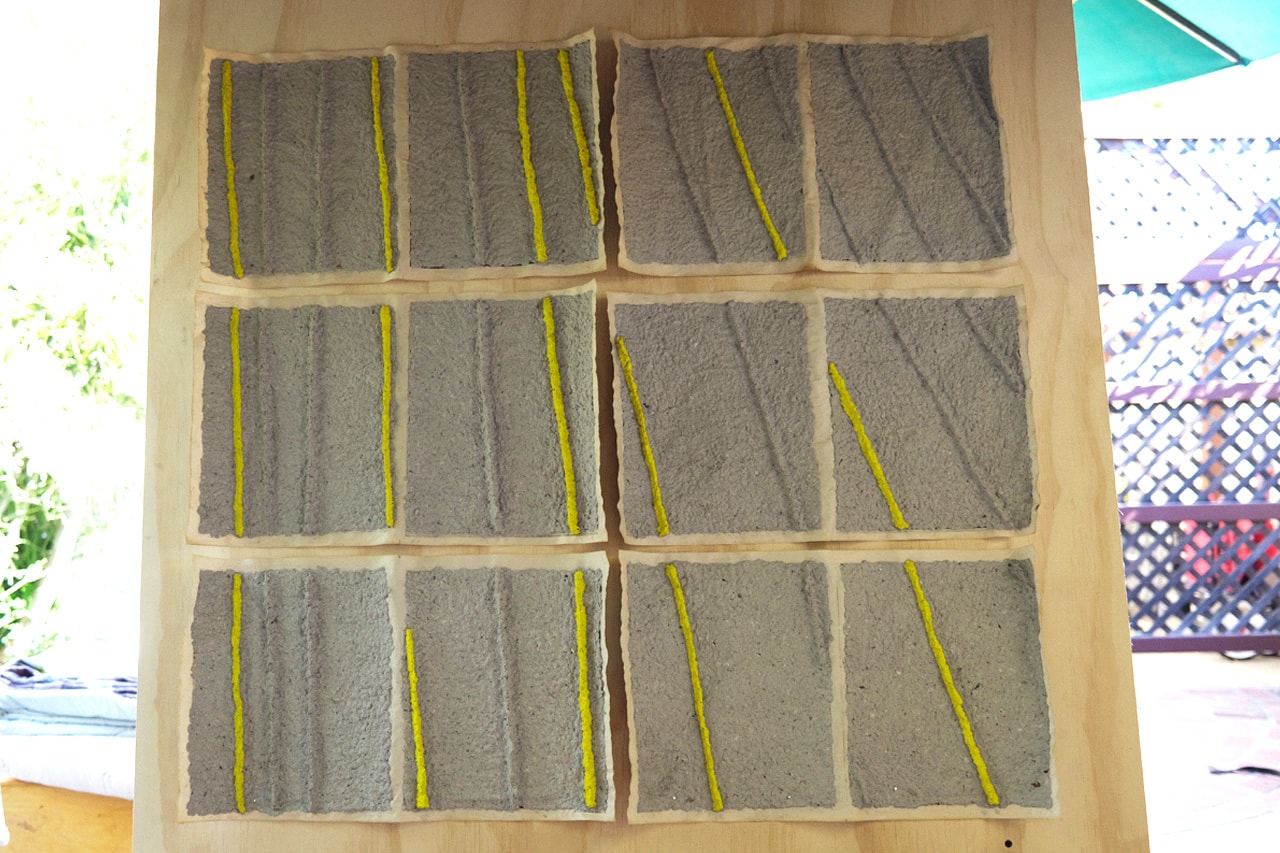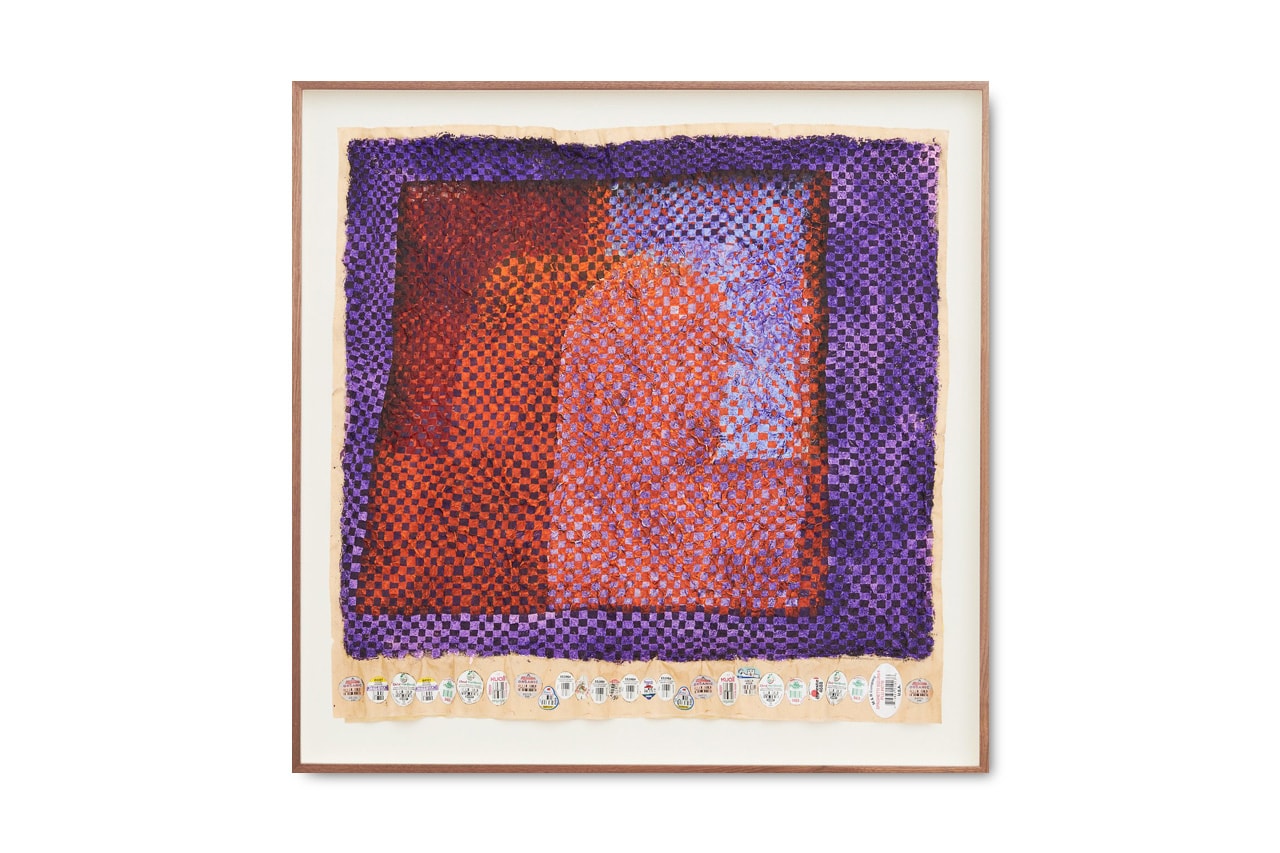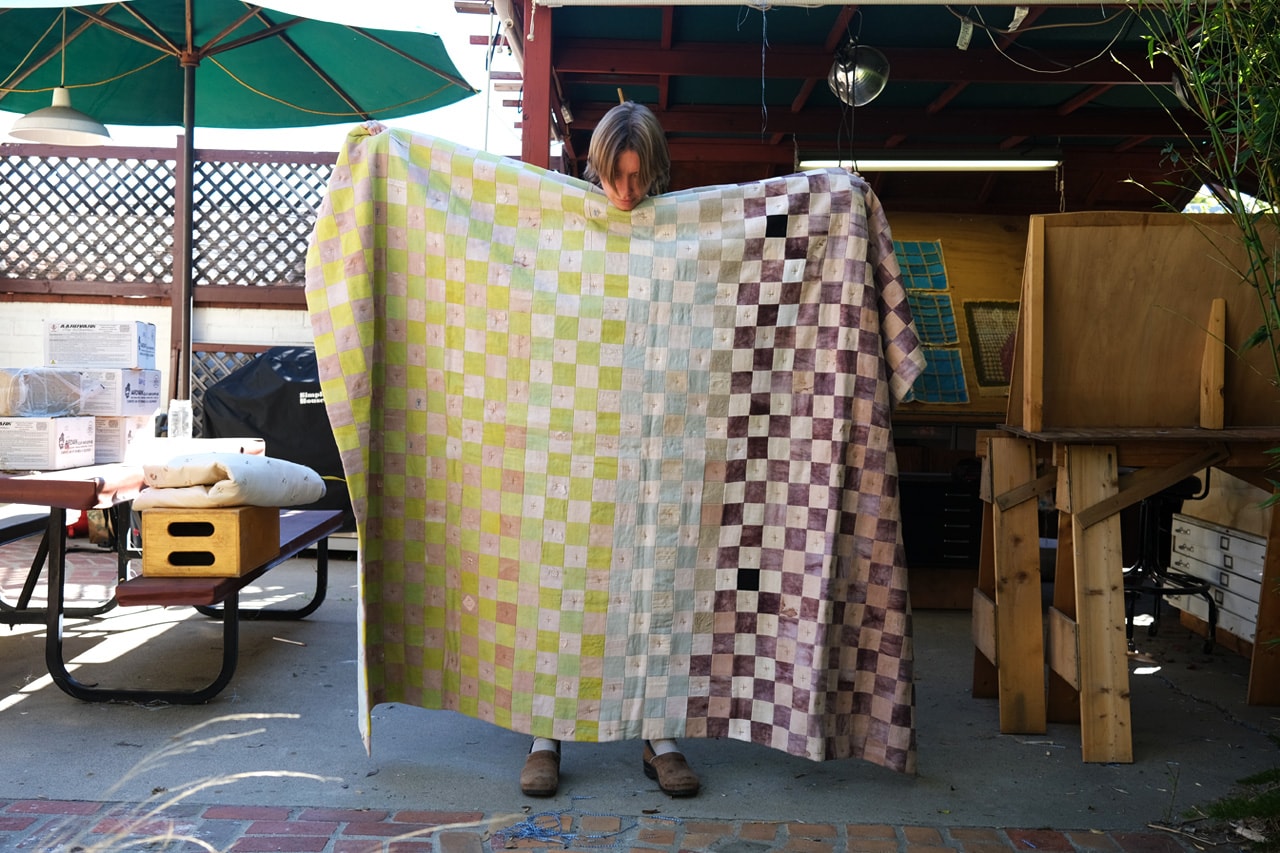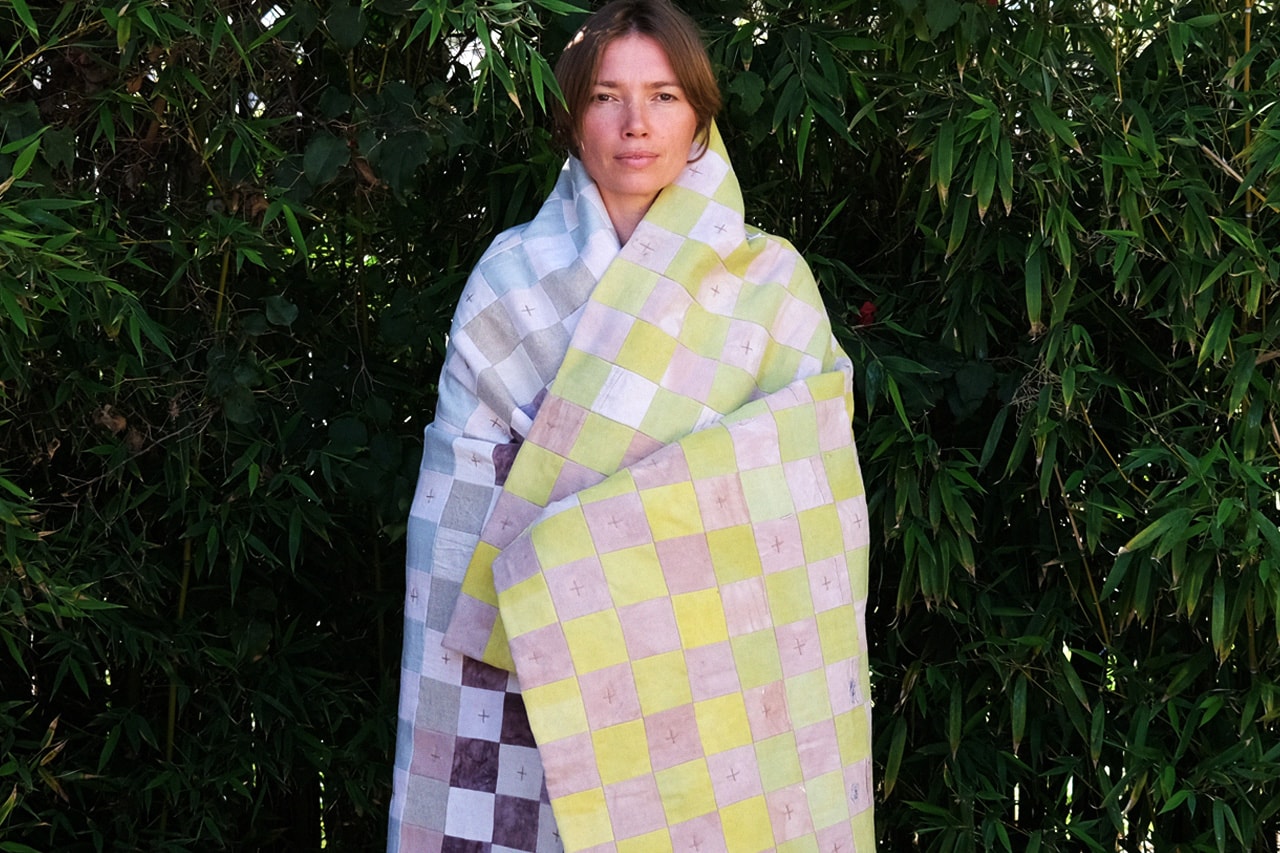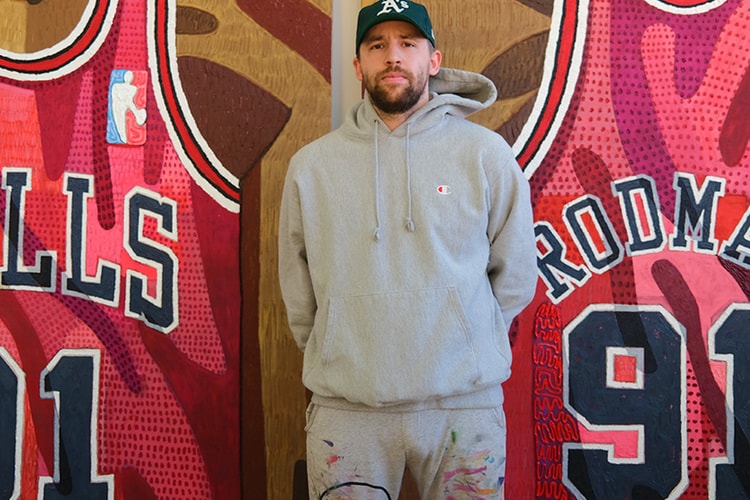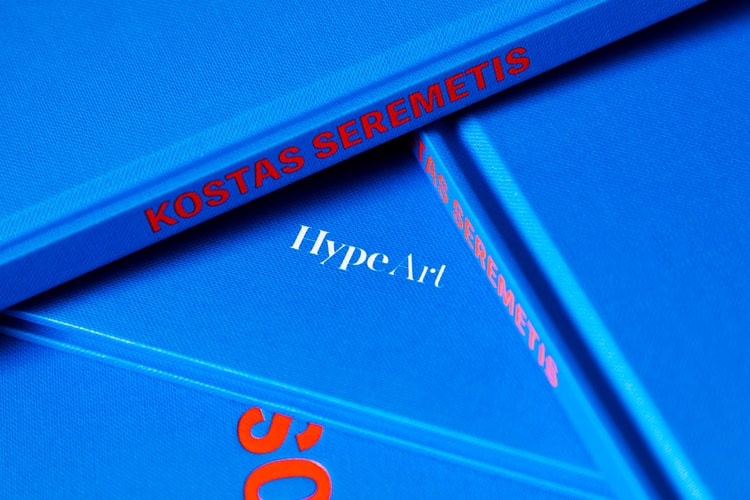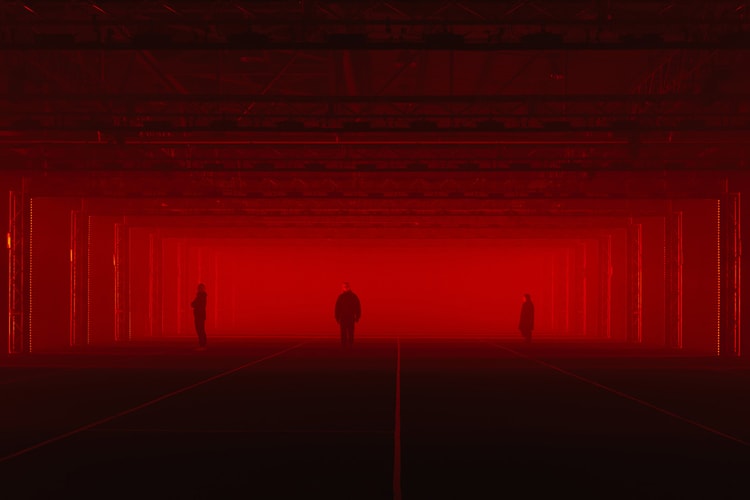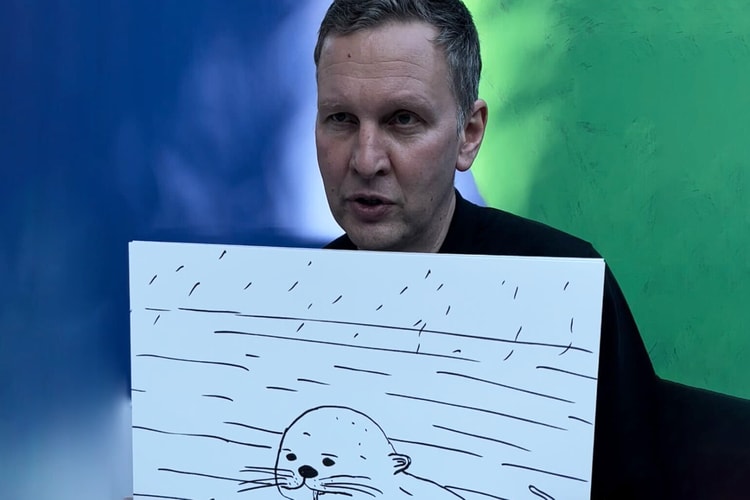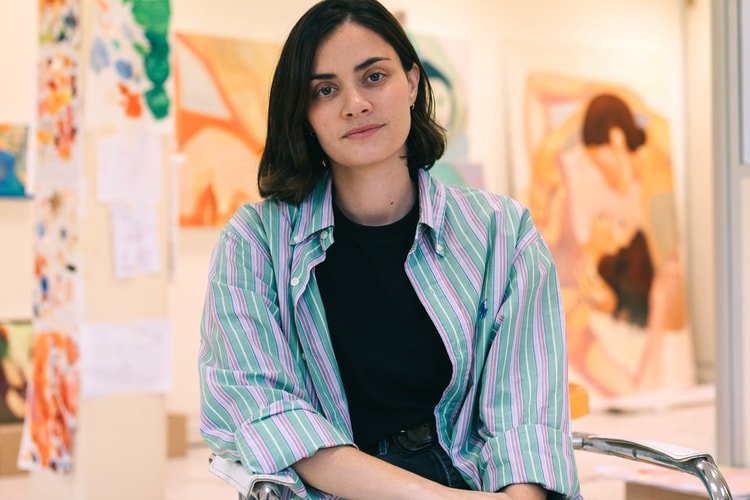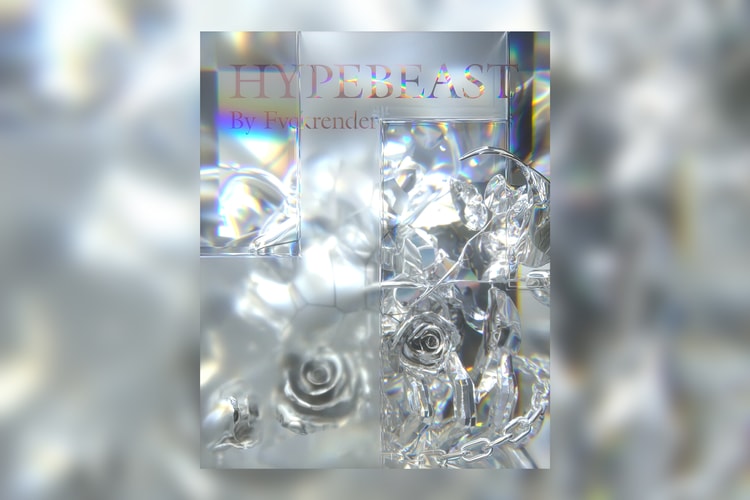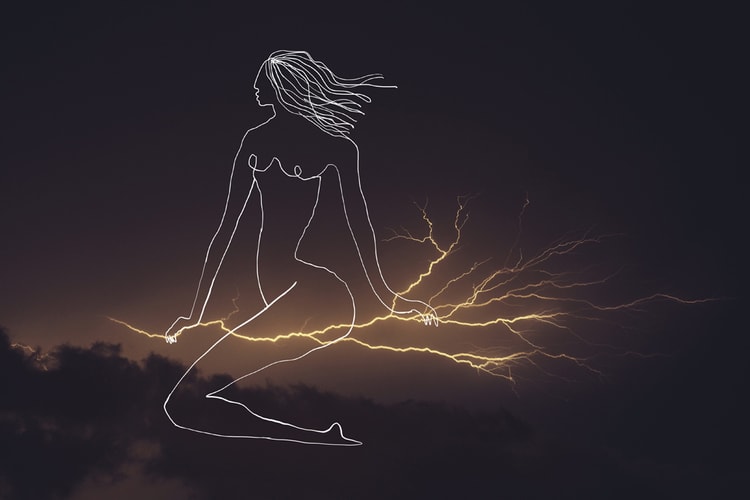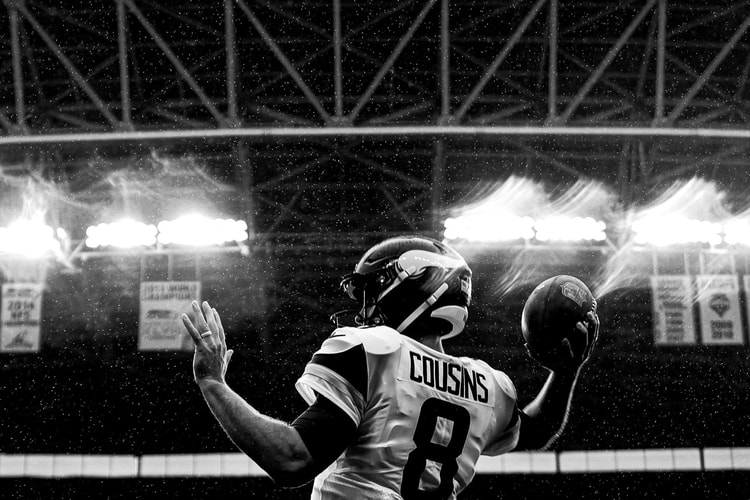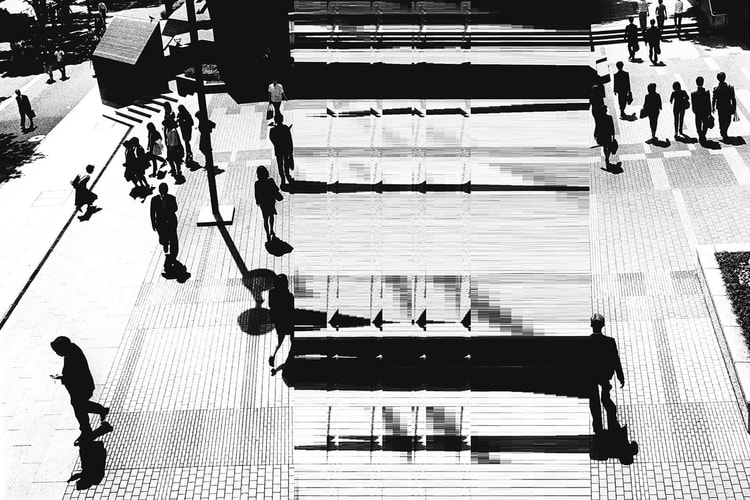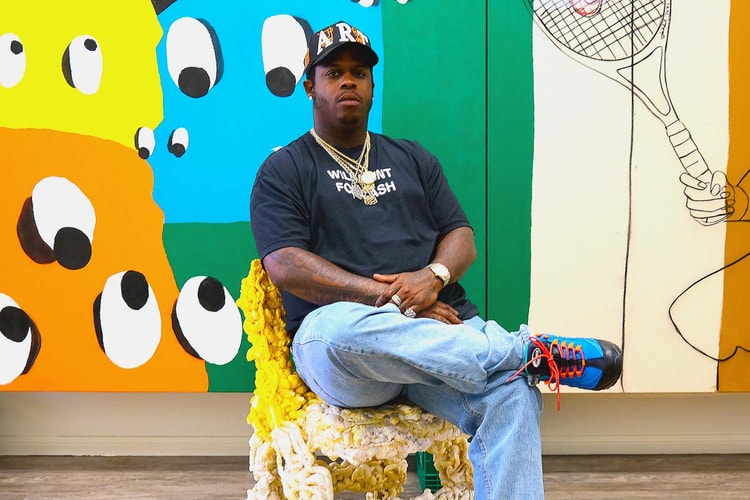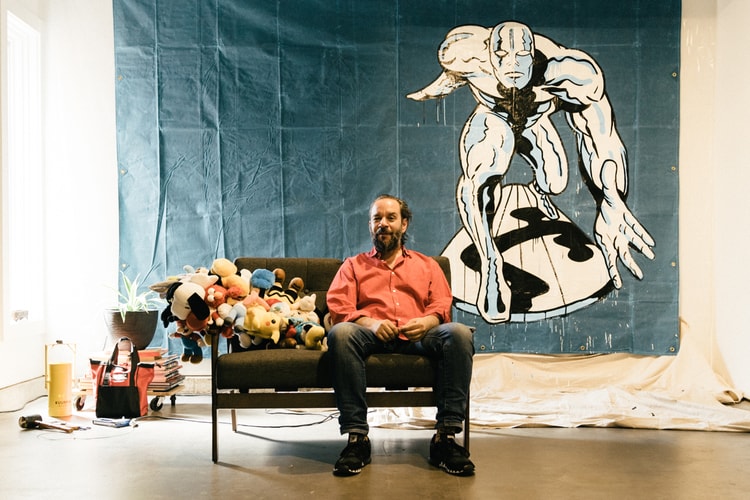

Though just a stones throw away, Pasadena is quiet and tucked away from the hustle and bustle of Los Angeles. It’s a fitting location for conceptual artist, Magnus Maxine, who is soft-spoken and creates with a meditative flow.
Born in Juneau, Alaska, Maxine spent the past 13 years in California, where she’d first learn to master her craft-based practice at CalArts. Working across a number of disciplines, including paintings, sculptures and textiles, Maxine’s work addresses trauma, oppression and labor as they relate to personal and collective experiences.
“This direct erasure provides a symbolic moment of calm and clarity.”
Emblematic of the school she attended, every material is carefully chosen to conceptually speak on a number of themes and issues. For example, her quilts are sourced from the bedding of the Los Angeles Prison System. Maxine transforms the material through a rigorous process that involves staining the linens with natural plant-based dyes in her outdoor studio. Her artwork, in essence, is a reflection of the process that creates them — from the forgotten labor of the feminine to the myriad of oppressed peoples around the world — offering the viewer a subtle moment of contemplation.
In a time when anxiety and fear is rampant in the news cycle, Maxine seeks to subvert it by blending the front page of newspapers into pulp, which she subsequently replaces with mandala-like paintings over. This direct erasure provides a symbolic moment of calm and clarity. Bordering each painting are unassuming fruit stickers that are repurposed into art, after her child is done eating. Maxine uses these stickers to appropriate the historical nature of the male-dominated art industry and showing a lighthearted approach to show art as a constant source for nourishment.
I caught up with Maxine the day before she cross country to model in New York fashion week to learn more about her practice and why taking things slow is perhaps the best approach to art-making. Check out the full interview below.
“Kind of like jumping off a diving board and learning how to swim.”
Are you from California?
I’ve been here for about 13 years — it’s the longest place I’ve ever lived in. But no I’m originally from Juneau, Alaska.
Do you recall how you got into art?
There was a few things. I just always remembered doing it. Actually, music was my first love. I begged the neighbor kid to teach me how to play the flute in the first grade. I was always drawn to moments of solitude and working with colors. All my early memories of school were filled with art classes.
Who are some figures who inspire you?
Emery Blagdon. He makes these beautiful little mobiles out of metals and they’re part of this big living sculpture called the Healing Machine. I also really like James Castle — also another outsider artist who uses cardboard and twine as a big part of his materials. I think he was blind and he would make his work and hide it around his farm in these little capsules to protect the artwork.
I also really love Jazz music.
Pharaoah Sanders, Alice Coltrane, Thelonious Monk. My Jazz taste kind of goes back to the earlier days of [Rahsaan] Roland Kirk. My new tradition is to make a new Jazz playlist for Christmas every year, but I’m also inspired by writers, like Maya Angelou, Maggie Nelson, Harry Dodge and Octavia Butler. Also love Sci-fi.
How was it studying at CalArts?
It was rigorous. Kind of like jumping off a diving board and learning how to swim to the shore of your choice.
It was challenging and a really sophisticated education. But I’d say also very specific to a certain type of person, because they don’t really teach you skills. It’s more theory and philosophy that you then, I don’t know, would enhance or you could apply to your work, or relate to, but there were no methods taught or technical stuff taught.
So that’s what I mean when I say, you just jump off and do your own work and learn how to talk about it. It was hard.
“It’s more of a daily practice and that changes and evolves over time.”
Yeah and you don’t quite know yourself at the same time…
Yeah, I mean I was 24 when I started. So I started a little bit late for undergrad, and I wanted to because I didn’t have money. I just wanted to have life experience. But basically, it became I don’t know, it just became like really validating because I was very much supported by my vision and like my interests and my ways of doing things. So it’s actually a really positive experience. Although, in short, it was pretty hard and challenging.
Going back to those developmental days, has your art steered far away from what you were making early on?
There’s definitely a thread. I started working with paper in 2012 when I was studying abroad from CalArts — so the paper conversation has continued. But also in the way color and repetition occurs in my work, that’s definitely part of the thread.
How would you in your own words describe your practice?
In terms of material, each piece is very considered. I choose newspaper specifically because it’s a material that relates to the body for everyone yet I’m abstracting and kind of destroying the information and then making abstract paintings on top of that. So I would say they’re just meditations that I work through and spend time with.
I choose newspaper because not only is it it’s a ready-made, but it’s something that we — and by everybody — I mean, we the group, consciously understands as a piece of material as something they can relate to their body, through just the mere dimension of it. And by applying abstraction to it, it kind of grounds it and brings those two places together.
The fruit stickers definitely speaks to being a mother, and for me, also to nourishment, labor and consumption. A lot of this work is speaking to impermanence because it’s fragile and kind of created in a way that contradicts itself in terms of being archival and ‘what does that mean’ and how it changes.
My work also talks about time, but I don’t have a very formalized explanation for myself. I like to keep it that way, at least for the moment, because I don’t want to be a master of this. It’s more of a daily practice and that changes and evolves over time.
“2020 will be something we’ll be unwrapping for a really long time.”
When you approach making a piece, whether the colors or the pattern, is there a specific image you have in your mind already? Or do you write about it and meditate on the thought?
I love that idea, but sometimes with larger pieces, there’s definitely an image that comes to mind that I will address. But the smaller pieces are more about addressing the unknown and no having a plan, but allowing it to flow through me.
This particular piece was started in 2017 and I put it away for a really long time. Whereas this one was started in 2020 — so there’s not really a plan, but I like to keep it that way.
Can you elaborate further on how you aesthetically address issues, such as labor and oppression?
I would say the recognition or observation of oppression really comes more clearly with the quilts, because of the material, which are specifically from institutions, such as prisons. I didn’t choose that, it was given to me, but I felt that it was so interesting historically and beautiful just as a material for someone like me who I like quilting. But it was like I need to use this material and recycle it, but I can’t ignore the fact of what its function was, so as someone who thinks with concepts in their work, I definitely was considering what quilt making is, which is women’s work, historically.
And it’s women’s work using materials that have become obsolete or considered thrown away clothing and done in or around the home. With the checkerboard patterns and how those formally came about, they’re speaking specifically to American quilting, but also to American institutions based on the materials that are being used.
As the pandemic has forced us all to reflect on a lot of things, existential questions being one of them, how have you as an artist coped with everything?
My daughter was born in 2019, so as the pandemic began to progress she was about seven months old when the lockdown happened and I was in my first year of my postpartum. For me, it was a really frightening to be a new mother. Hormonally, you’re already going through all these changes and then you face the world going through all these changes at the same time. It was such a juxtaposition of negotiating innocence and recognizing total despair.
For me, during that time, when I first started this practice in 2017, it was very experimental. But I made a conscious effort and decision to get the newspapers from 2020. So I have hundreds of newspapers. And those are the newspapers that I’ll be working with probably in the next 10 years. And for me the change of my identity from being just a person in the world to becoming a mother during that time and seeing violence and social injustice, just like in our faces on a daily basis, politically. I decided that I’m going to have to probably process that for a while.
Coming into motherhood is something I have to reckon with on a daily basis. grappling with the events of the world, and how they are going to affect my daughter, inevitably, are things that I’m going to have to process forever. And so yeah, that’s why I got all of those newspapers. And I also think 2020 will be something we’ll be unwrapping for a really long time. We keep thinking we have our finger on it, and we’re like, ‘Oh, it’s over.’ And it’s just not over.
“This is the very first time I feel like I’ve stepped into my practice and just nurtured it.”
Is there an upcoming exhibition we can look forward to?
Well right now I’m just developing new work and there’s a lot of interest in studio visits. I hope so, because I’d love to continue to share my work. I’m currently showing a few pieces on PLATFORM, but there’s nothing in the books yet.
That could be a good thing though. I’ve spoken to a lot of artist who prefer to work freely as to having a deadline hovering over their heads.
Yeah and I also don’t mind a deadline, but I just take things as they come. I’m not in any rush and I don’t want to force it. I was really fortunate to share my work at Stanley’s. You know, this is the very first time I feel like I’ve stepped into my practice and just nurtured it. I think that was definitely enforced by the limitations of 2020.
So to go back to that question, it was an opportunity for me to just embrace and work through life with industriousness and helpfulness, and acceptance and enthusiasm, which brings me joy, really, on daily basis.
And I get to work outside haha.

Shortly after our talk, Magnus Maxine departed cross country to model in New York Fashion Week. Stepping into her stride, the conceptual artist has recently worked with Stanley’s in Los Angeles along with the David Zwirner-backed PLATFORM. Art, for Maxine, is a daily meditative practice — one that be used to comb the tension and soothe the soul.








